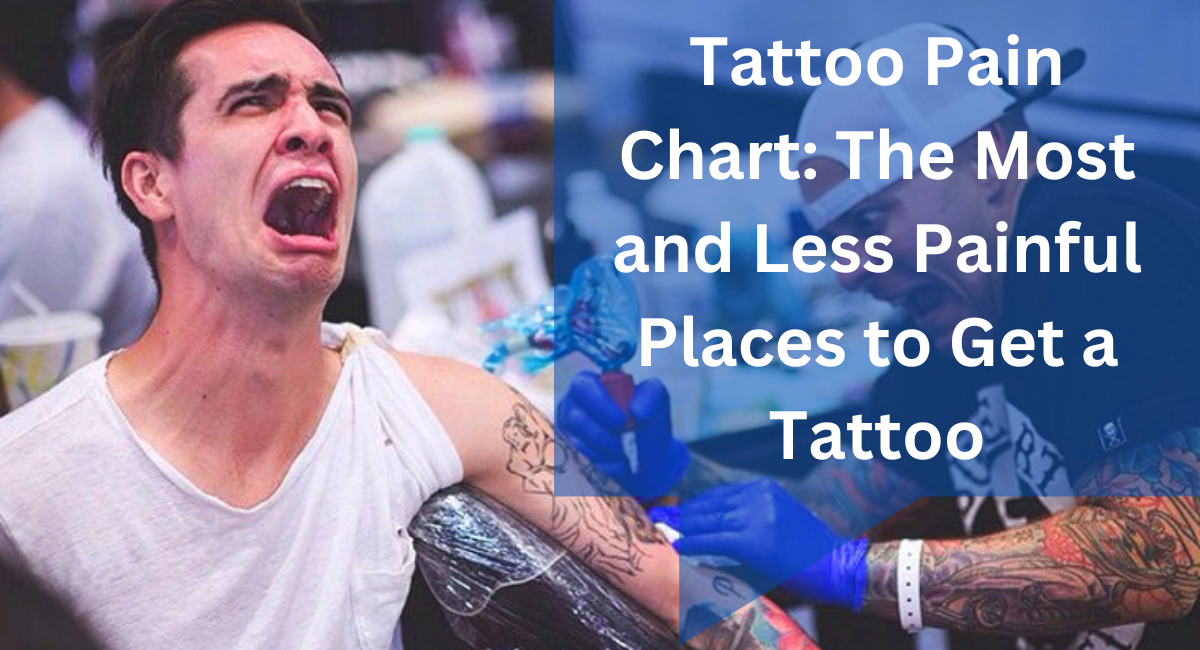Understanding the intricacies of tattoo pain involves considering factors such as sex, gender, location, and individual pain threshold. Embedded within this exploration is the valuable resource known as the tattoo pain chart, serving as a guide to assist individuals, particularly women, in gauging the potential discomfort associated with getting a tattoo.
While tattoos, in general, are known for causing varying levels of pain, this can be influenced by personal tolerance, the specific body parts involved, and overall health. Areas characterized by more nerve endings and less fat tend to be more painful, encompassing spots with thinner, more sensitive skin, bony regions, and minimal fat.
Remarkably, the armpit, rib cage, and ankle emerge as some of the most painful areas for tattoo placement, as highlighted by insights from the tattoo pain chart. Additionally, other regions such as the finger, spine, shins, groin, kneecap, elbow, wrist, foot, hip, and leg are recognized for their heightened sensitivity. In contrast, the forearm, shoulder, back, and thigh are considered less painful, boasting fewer nerve endings and thicker skin.
For those intrigued by the tattooing experience, individuals often describe it as a fusion of a burning and sharp pricking sensation. The challenge lies in determining the most painful tattoo locations, given the subjective nature of pain.
This comprehensive guide has been curated to aid individuals, encompassing both males and females, in identifying the least favorable spots for tattoos, with a special emphasis on insights derived from the tattoo pain chart.
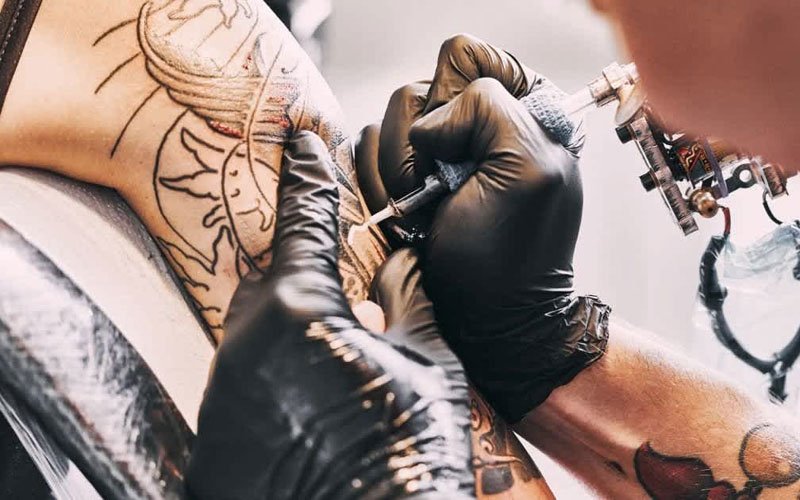
1. Tattoo Pain Table
Numerous factors come into play, yet a tattoo pain chart can aid in gauging the level of discomfort associated with getting a tattoo in a specific area.
Tattoo Pain Chart For Female
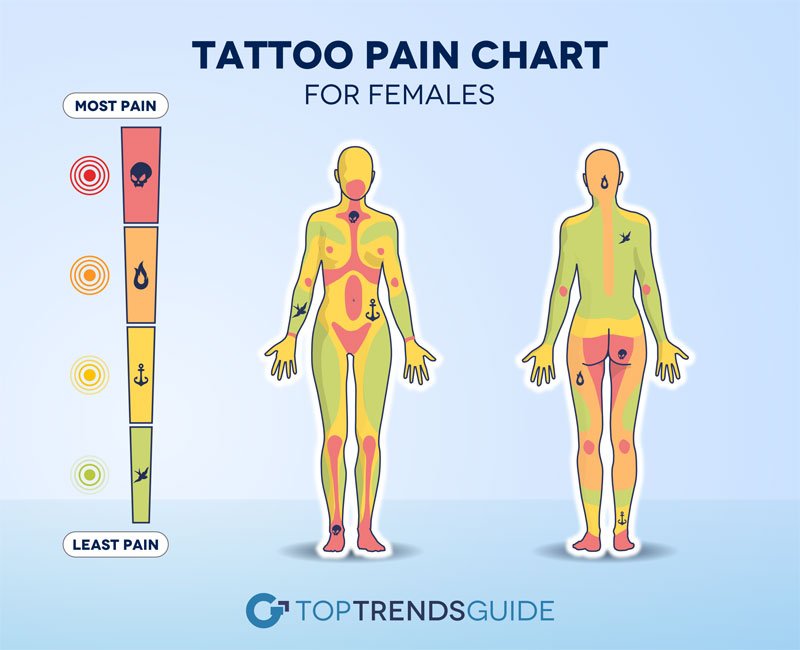
Male Tattoo Chart
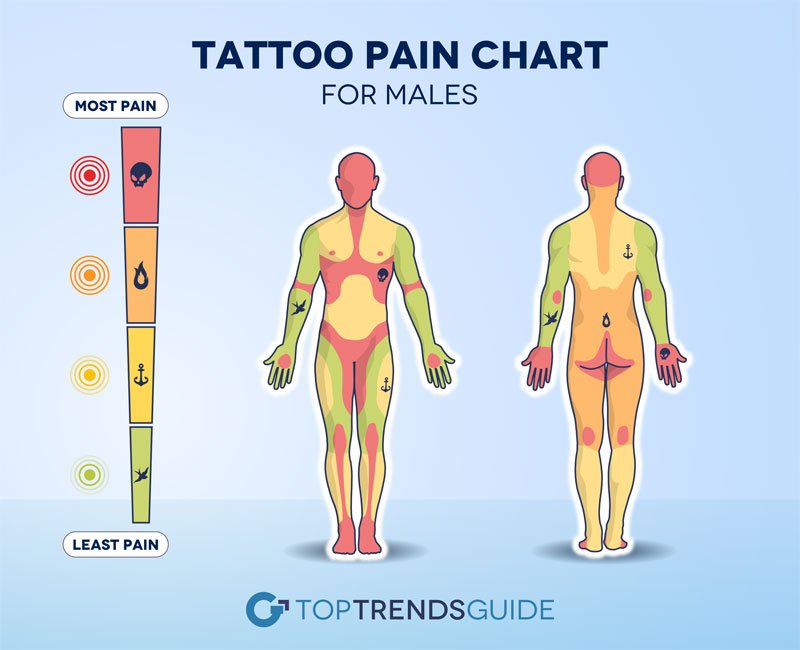
2. The Most Painful Places to Get a Tattoo
Armpit Tattoo Pain
Getting a tattoo in the armpit is known to be one of the most sensitive areas, resulting in considerable pain. The healing process can also be prolonged. The discomfort typically arises from the axillary nerves, which extend from the upper arm to the armpit. This region can be particularly sensitive, and the surrounding skin may be thin, making you more prone to flinching during the tattooing process.
Issues with lymph nodes may arise, leading to swelling and irritation. Regardless of your level of tattooing experience, seasoned artists advise against getting tattoos in the armpit. To maintain cleanliness, it is recommended to use breathable gauze and avoid wearing tight clothing and applying deodorant to the area.
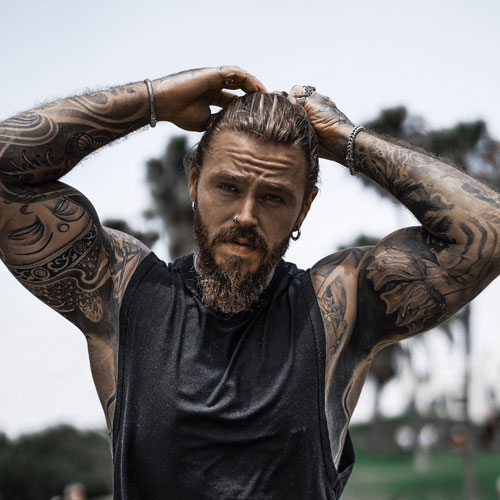
Rib Cage Tattoo Pain
The rib cage will probably rank as the second most sensitive area during the tattooing process. The thin skin enveloping the ribs, positioned just above numerous bones, implies that the pain experienced will be more acute and piercing rather than a dull, lingering ache.
Individuals with a considerable pain threshold should steer clear of rib tattoos due to the abundance of nerve endings and minimal fat in the vicinity. Additionally, the act of breathing throughout the tattoo session can intensify the discomfort.
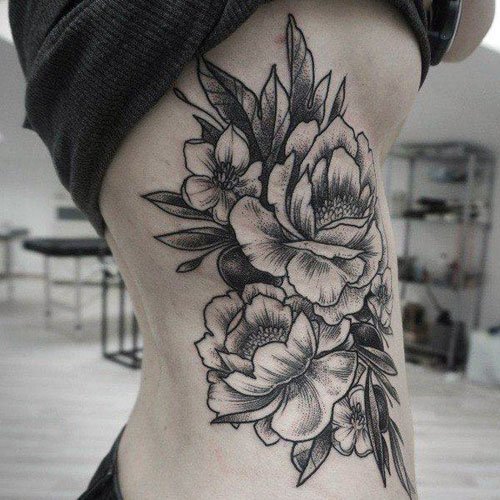
Ankles, Shin Tattoo Pain
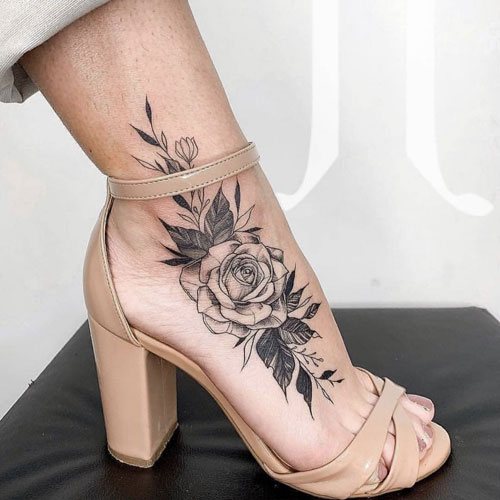
Breasts and Nipples Tattoo Pain
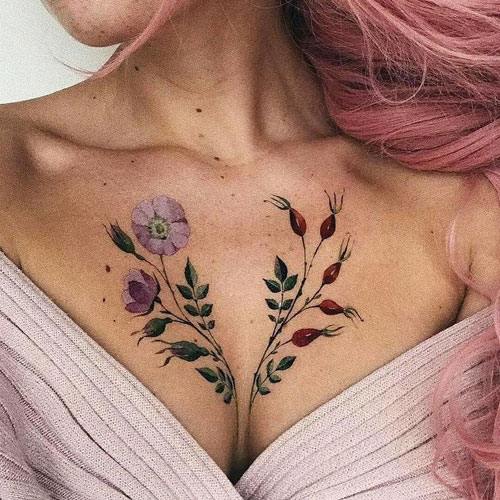
Groin Tattoo Pain
Due to the abundance of nerve endings, getting a tattoo on the groin can be quite painful. The presence of multiple lymph nodes in the genital area, situated within this region, adds to its sensitivity.
Keeping your skin clean and dry in this particular area can be challenging. To alleviate discomfort, consider going commando for a few days after your treatment. During the healing process, it’s advisable to steer clear of irritating lotions or scrubs.
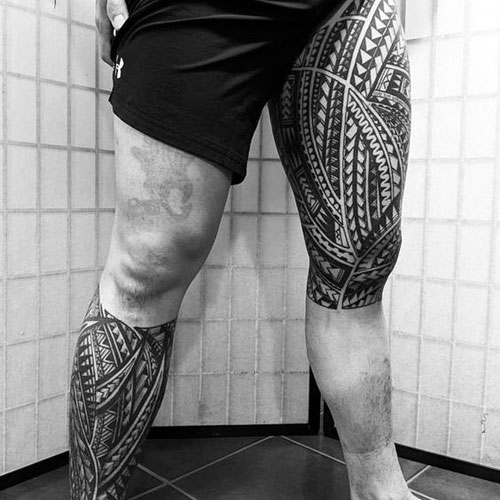
Kneecap Tattoo Pain
Due to the lack of padding, the flexible nature, and the mobility of the kneecap, undergoing a tattooing process in this area can lead to significant discomfort. Healing from such a tattoo can be notably more challenging compared to other body parts, primarily due to the bending motion of the kneecap during movement.
The proximity of the needle to the bone induces sharp pain, and placing the tattoo below the kneecap can result in intense discomfort emanating from the patellar tendon, which extends to the shin.
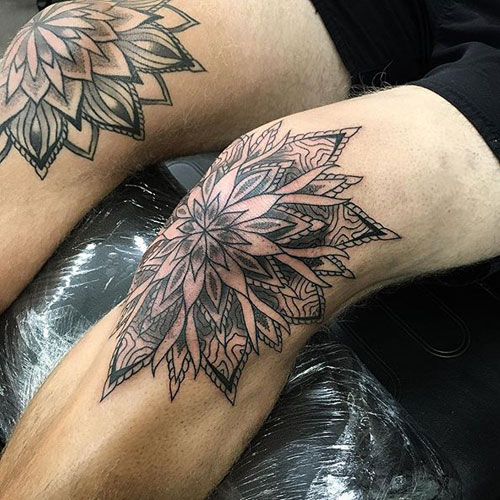
Neck & Spine Tattoo Pain
Due to their sensitivity, tattoos on the neck and spine can be particularly painful. The spine, with its numerous nerve endings and slender structure, tends to induce discomfort in both men and women opting for spine tattoos. The pain in the spinal and lower back regions may be alleviated somewhat by the presence of fat and muscle. Nevertheless, the delicate nerve endings in this area can pose challenges for tattooing.
The presence of the Adam’s Apple heightens the pain associated with neck tattoos, making it advisable to steer clear of them. Opting for a more comfortable experience, consider placing your design on the back or side of your neck.
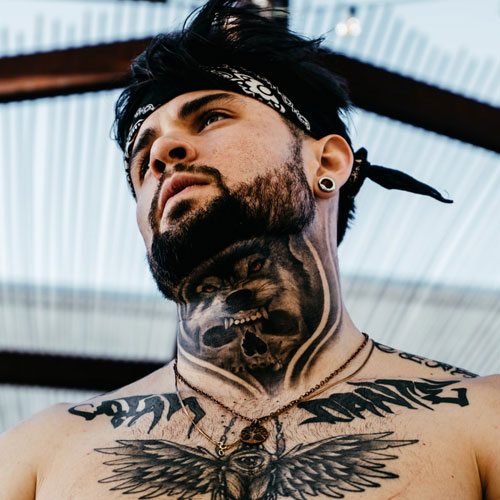
Behind The Knee Tattoo Pain
Due to the thinness of the skin behind your knee and the proximity of nerve endings near the surface, getting a tattoo in this area can be quite painful. Additionally, the presence of veins at the back and the sensitive sciatic nerve along the side of your leg adds to the discomfort.
Expect to feel the needle’s vibrations and pokes distinctly in this placement. Also, anticipate experiencing painful rubbing each time you rise from a chair.
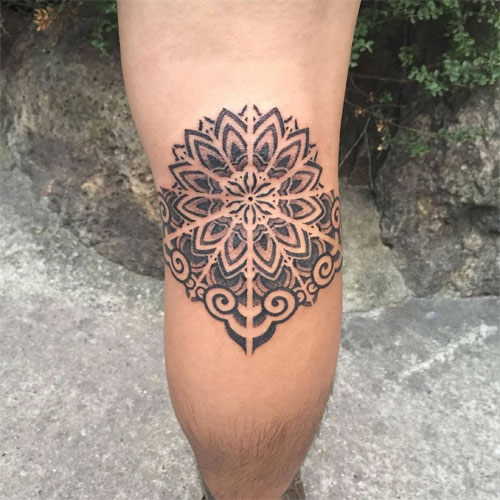
Hip Tattoo Pain
Getting a hip tattoo can be incredibly painful, and the intensity of the pain depends on the specific location. Due to its proximity to the hip, there’s minimal fat to provide a cushion for the needle, making the experience more uncomfortable, especially for individuals with a slender build. The skin in this area is thin and rich in nerve endings.
To mitigate the pain, consider opting for a tattoo placement on one side of the body, nearer to the buttocks.
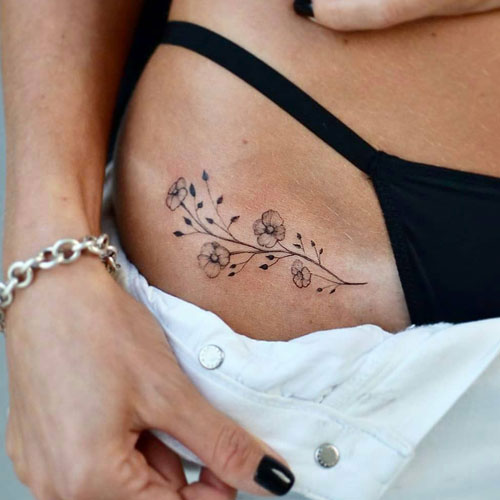
Ears, Head and Face Tattoo Pain
Getting tattoos on your ear, head, and face can be quite agonizing and uncomfortable for both men and women. These areas have thin skin with minimal muscle or fat to provide cushioning. Consequently, every poke and vibration during the artist’s work is keenly felt. To alleviate the pain, consider opting for a larger design on one side of your head and extending it across your entire face.
Tattooing on the face is generally less intense than on the head, but it presents challenges when near sensitive areas like the eyes, cheekbones, and mouth. While the ears are less painful than the head overall, focusing on the back and lobes of the ear can induce extreme discomfort due to fewer fat cells for cushioning. To make the experience more bearable, consider choosing a smaller design for behind your ear.
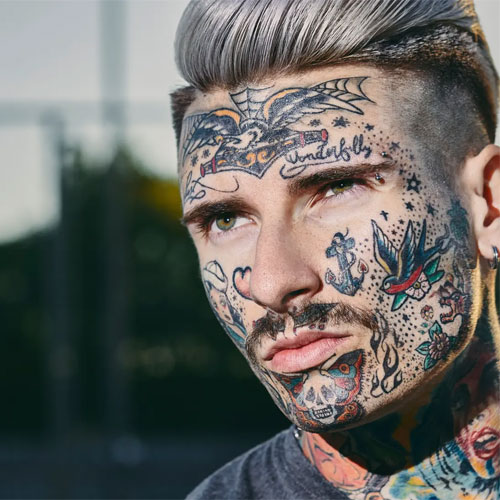
Lips Tattoo Pain
The lips stand out as a particularly sensitive area for tattoos, owing to the loose skin and abundance of nerve endings. Throughout the session, your lips will remain parted to avert dryness and cracking. Staying still during the procedure is crucial to minimize swelling, bleeding, and bruising.
Considering the thickness of your lips is a determining factor for the tattoo’s size, individuals with thinner lips might encounter challenges, as the presence of fat can provide a pain-buffering effect. The healing process can pose difficulties and discomfort, requiring diligent care. To ward off infections, it is essential to be mindful of your diet and hydration.
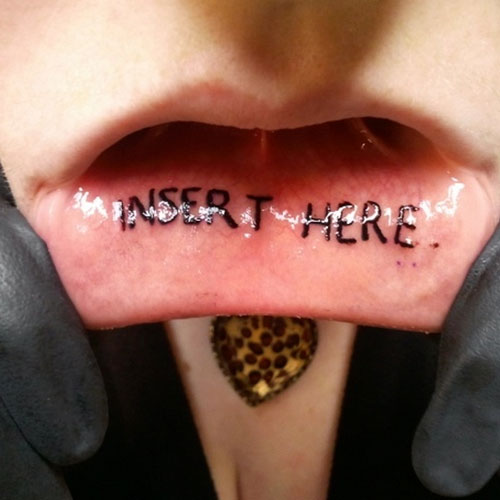
Hand Tattoo Pain
While finger and hand tattoos enjoy widespread popularity, it’s essential to note that they can be notably painful. This discomfort arises due to the thinness of the skin around the bones in this area, making it advisable to avoid tattooing on such sensitive terrain. The persistent sensation of needles stinging is particularly unwelcome in this delicate region.
Furthermore, hand spasms may occur during the process, exacerbating the overall discomfort. Considering the minimal presence of fat or muscle in this specific region, the combination of factors creates an environment conducive to painful tattoo sessions.

Foot Tattoo Pain
Getting a tattoo on the feet or toes can be quite uncomfortable due to the sensitivity of these areas. The vibrations from the needle make it challenging to avoid flinching, and there is a risk of nerve irritations, especially in the arch, which is a particularly sensitive region.
Additionally, the thin skin in these areas lacks the padding of muscle or fat and is in close proximity to many bones, intensifying the pain. While you might be able to tolerate pain with a simple and small design, it’s important to consider that expressing yourself through foot or toe tattoos may make it difficult to move your feet or walk comfortably.
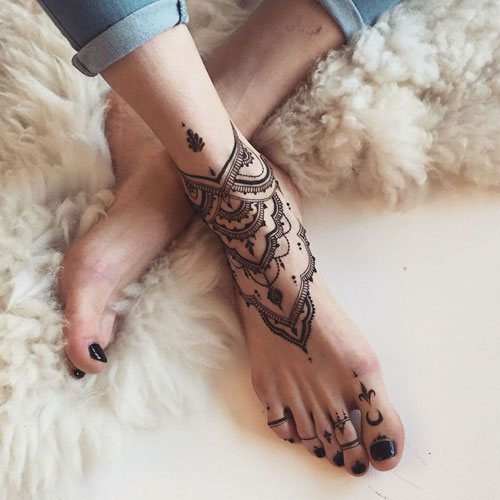
Stomach Tattoo Pain
The discomfort associated with a stomach tattoo is typically quite intense. This is contingent upon factors such as body type and gender. Given the looser and more sensitive nature of stomach skin, individuals with higher body fat tend to endure greater pain. Those with substantial muscle mass and good overall health, whether male or female, are generally better equipped to handle the experience. A slender abdomen may result in heightened pain, as the skin in this area is pulled taut.
One advantage of choosing this location is the absence of concern about bones or cartilage that could amplify the tattoo’s painfulness. Due to its proximity to the genital area, the lower stomach is often the most sensitive. However, the region near the ribs may also elicit particularly intense sensations.

Inner Bicep Tattoo Pain
While getting a tattoo on your inner bicep can be uncomfortable, the pain is relatively bearable thanks to the larger muscle mass in the vicinity. The inner bicep, being thin and loose, can result in varying degrees of discomfort, ranging from moderate to severe.
Considering the proximity of the elbow to this region, both the inner bicep and elbow are renowned for being particularly painful areas. Discomfort may persist as your body interacts with the healing skin.
For those who are sensitive to pain or favor a larger design, opting for the outer bicep might be a more suitable choice.
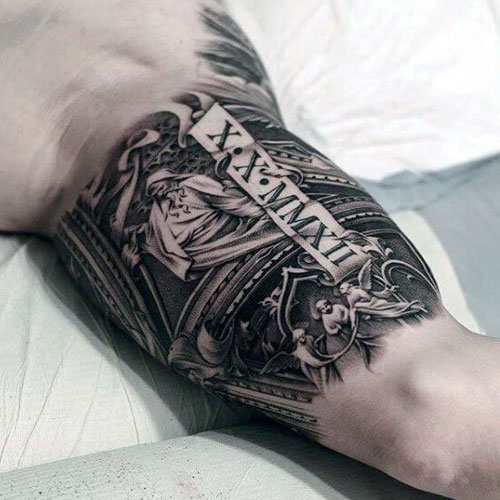
Inner Thigh Tattoo Pain
Due to the abundance of nerve endings leading to the surface, getting a tattoo on the inner thigh can be quite uncomfortable. The thinness of the skin around the inner thigh and lower legs makes every needle movement distinctly felt.
To minimize discomfort, opt for a smaller tattoo and steer clear of the groin area. Additionally, prevent irritation and fading by refraining from wearing clothing that may rub against the tattoo during the healing process.
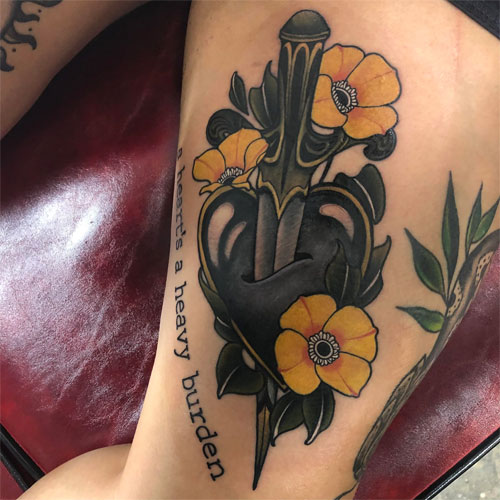
Underboob Tattoo Pain
Due to the minimal presence of fat and muscle beneath the breast, discomfort may arise. This can be attributed to the location of the underboob above the breastbone and ribs.
Swelling or bruising in the underboob area may also contribute to an uncomfortable sensation. If you can endure it, you’ll discover an attractive design that is sure to capture everyone’s attention.
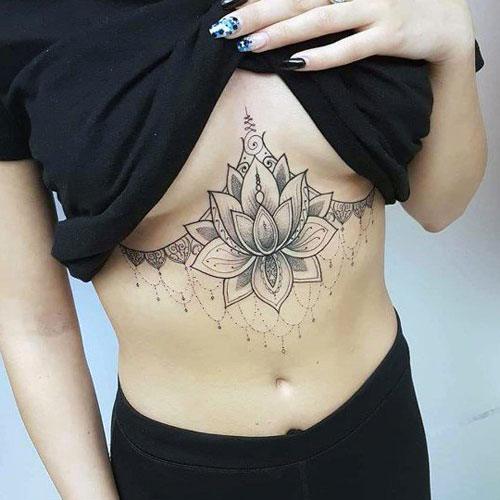
Chest Tattoo Pain
Due to its proximity to the collarbone, sternum, and nipples, the chest tattoo can be particularly painful, as these areas are sensitive and rich in nerve endings. The upper chest generally has thicker skin, making tattoos more tolerable in that region. However, the lack of fat and proximity to bones means there’s minimal cushioning.
For a female biological mother getting a chest tattoo, the experience may be less painful due to the support provided by the breasts. On the other hand, a male biological father may experience extreme pain, even if they have some muscle mass in that area. It’s advisable to be prepared for a prolonged and intense session, as many chest tattoo designs are intricate statement pieces.
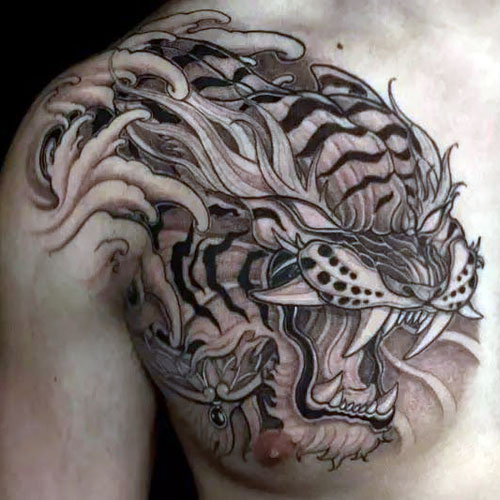
3. The Best Places to Get a Tattoo
Tattoos tend to be most comfortable when placed on the upper arms, shoulders, and outer biceps, as these areas feature more sensitive skin and thicker flesh, facilitating better absorption of the needle.
Forearm Tattoo Pain
Due to the thicker, fatty skin and ample muscle in the forearm, it emerges as the preferred location for getting a tattoo due to enhanced comfort. Forearm tattoos, being situated in an area with fewer nerve endings, are widely favored for expressing creative designs.
The presence of the radial nerve along the outer arm results in comparatively milder pain on the inner forearm. However, challenges may arise when attempting to position the tattoo closer to the elbow and wrist. The lower arm’s clear visibility aids the artist in executing their work more efficiently.
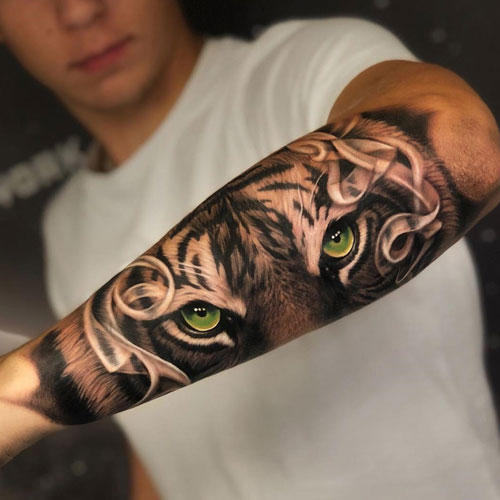
Shoulder Tattoo Pain
Getting a shoulder tattoo typically results in mild to moderate discomfort. Due to the ample flesh and muscle covering the shoulder, the sensation tends to be less intense compared to other body areas. This makes the shoulder an ideal canvas for larger tattoo designs. The presence of fewer nerve endings contributes to a somewhat nostalgic experience, and the thickness of the skin allows for extended tattoo sessions.
While the pain may be more pronounced in the back and front of the shoulder, the exterior part offers a favorable experience for novice tattoo artists still building their pain tolerance. Men generally experience less discomfort due to their increased muscle mass, whereas women can anticipate a moderate to mild level of soreness in this region.
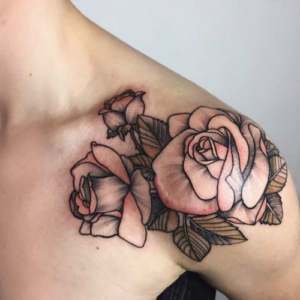
Bicep Tattoo Pain
The bicep, being relatively less uncomfortable compared to other areas in this group, proves suitable for tattooing. It boasts fewer nerve endings and thicker muscle tissue. While the inner and lower segments of the biceps are less painful owing to thinner skin, the outer biceps can endure the vibrations from a tattoo needle.
This region leans more towards sensitivity than sharp pain, making the experience generally tolerable. It serves as an excellent canvas for sporting a stylish sleeve or a more expansive design.
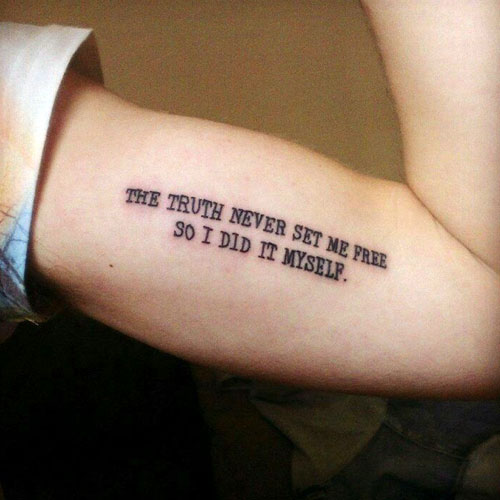
Calf Tattoo Pain
Experiencing discomfort during a calf tattoo is unlikely. The thickness of calf muscles, accompanied by the presence of ample fat and thick skin, serves as an effective cushion against the sensation of needles. Calf tattoos are particularly suitable for expansive, vivid designs, thanks to these features.
Moreover, the calf region is sufficiently distant from bones, minimizing any unwelcome rattling sensations often associated with certain tattoo placements. However, it’s important to note that the ankle and back of the knee, where nerve endings are densely concentrated, may elicit a heightened sense of pain.
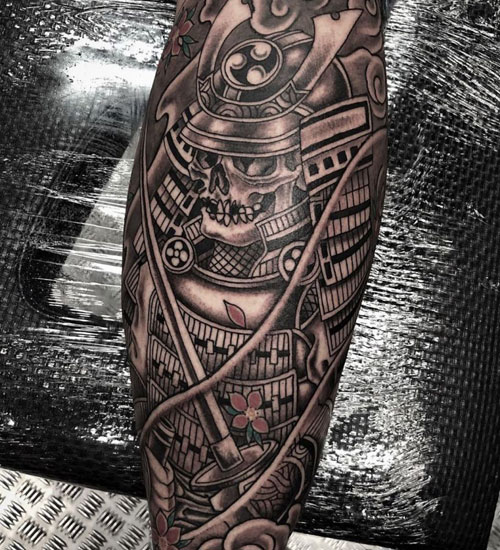
Lower and Upper Back Tattoo Pain
Getting a tattoo on your upper or lower back can be a bit uncomfortable. The level of discomfort depends on the size of the artwork. Generally, a tattoo on the lower or upper back may result in mild to moderate pain since there are fewer nerves and more muscle mass in these areas. This extra muscle can act as a cushion, making the needle sensation more bearable.
For individuals who are very thin and have a bony upper back, there may be a more pronounced rattling or vibrating pain during the tattooing process. On the other hand, the lower back tends to offer a better buffer against the pain, providing a more comfortable experience.
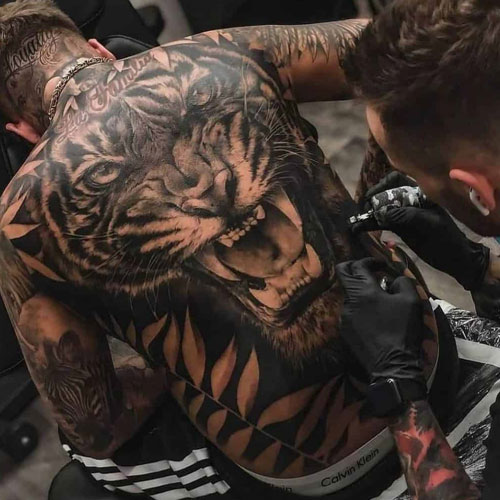
Upper Outer Thigh
Getting a tattoo on your upper extremity won’t be painful, thanks to the protective muscles surrounding your bones and nerves. The skin on your thigh is notably thick and has a layer of fat for added support, making it an ideal location for stylish designs.
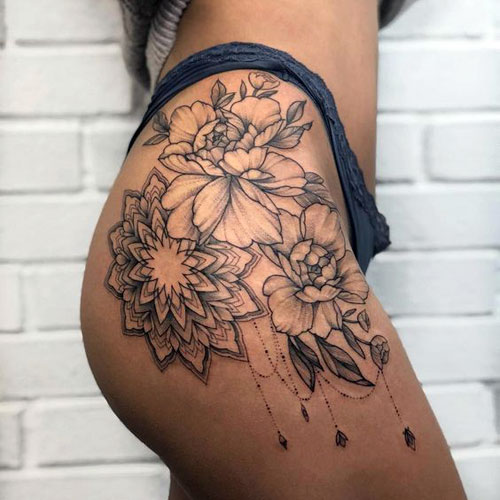
4. Factors that Affect Tattoo Pain
Numerous factors need to be considered, and the level of discomfort during a tattoo can differ based on factors such as your gender, weight, chosen artist, and adrenaline levels.
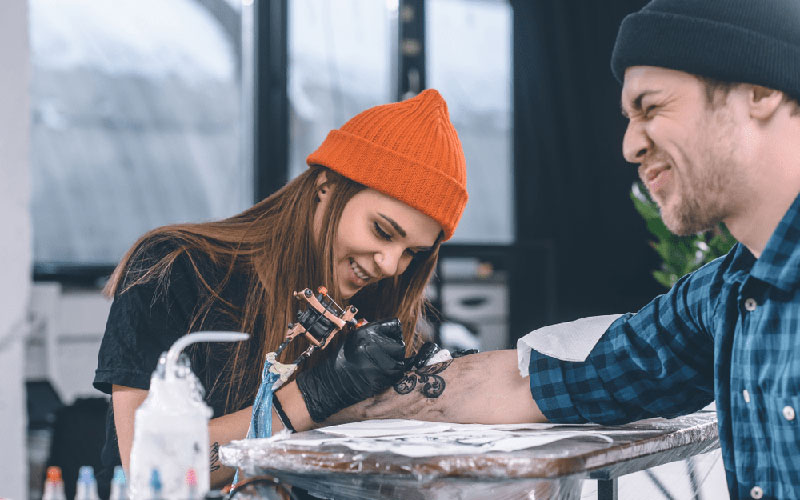
Web Sex
Research indicates that while biological women experience more pain compared to their male counterparts, they demonstrate a higher tolerance for tattoos. Experts propose that this phenomenon may be attributed to testosterone, known for its pain-reducing effects, enabling men to effectively endure extreme suffering and injuries. Additionally, the observation that biological men feel heightened pain in the neck, upper thigh, and hips, as opposed to their counterparts, could be linked to lower body fat.
Age and weight
Due to the enhanced durability of their skin, younger individuals find it easier to handle tattoos. As we age, our skin tends to become thinner and less resilient to the tattoo ink. The skin of younger individuals possesses greater elasticity, facilitating better ink absorption without the need for as many needles to achieve vibrant results. It’s important to note that personal experiences may vary. Research indicates that individuals older than 25 tend to have a higher pain tolerance compared to their younger counterparts.
The level of pain one undergoes during the tattooing process can also be influenced by body weight. Those at the extremes of the weight scale may experience more discomfort than those with a normal weight. Overweight individuals may be more susceptible to pain caused by ink bleeding, and this holds true for underweight individuals who have less fat.
Experience
The guideline suggests that the greater the number of tattoos you possess, the milder the pain tends to be. This is attributed to the development of a heightened pain tolerance, as well as familiarity with the sensation of needles impacting the skin and resonating near the bones. Individuals with a history of multiple tattoos are less likely to exhibit squirming or flailing, thereby diminishing the need for frequent adjustments by the artist.
One’s personal pain threshold is influenced by various factors. Nevertheless, those with a passion for ink are likely to experience a heightened sensitivity to pain compared to individuals embarking on their initial venture into body art.
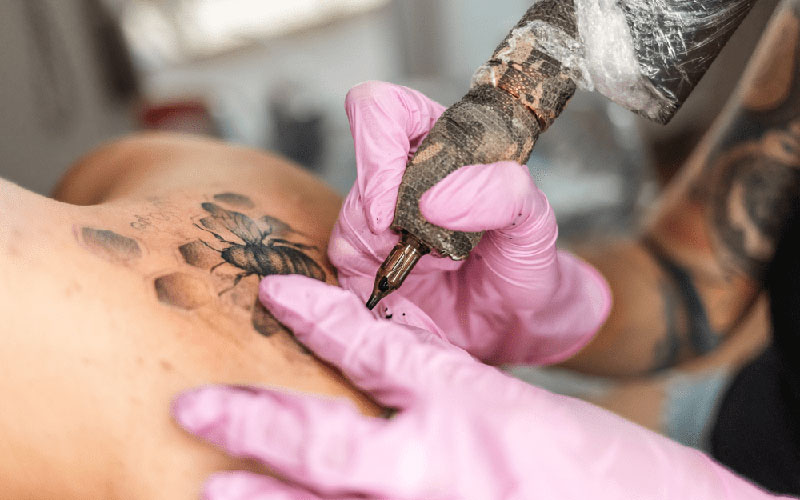
Artist
The level of discomfort you experience during a tattoo can be influenced by the proficiency, expertise, and artistic approach of the tattoo artist. Some tattooists may have a heavier touch, while others handle their needles with precision.
While artists who work at a slower pace may inflict more pain compared to faster counterparts, the trade-off is enduring the discomfort for a more extended period. If your artist is relatively new to the profession, they may initially struggle to find the right pressure. It’s crucial to acknowledge that inexperienced artists might work more slowly and may not promptly adjust to varying pressures.
Opting for budget-friendly tattoos may appear attractive, but it’s essential to ensure that the artist maintains clean tools and possesses the skill to tailor the experience to your preferences.
Endorphins
The hormone endorphins, which contribute to alleviating the discomfort of tattoos by inducing a sense of happiness during the needle application on your skin, will be beneficial. The pituitary gland initiates this chemical response, triggered when the brain registers the pain in your skin.
While endorphins alone may not completely alleviate pain, they can be employed alongside numbing creams and over-the-counter pain medications to effectively mitigate discomfort
5. How does tattoo pain feel?
While enduring the repetitive penetration of a needle into your skin may not be a pleasant sensation, it significantly influences the overall level of pain experienced. Individuals often liken the pain of getting a tattoo to a burning sensation, while some perceive it as akin to having their skin cut a thousand times per minute. The severity of tattoo pain varies, with the most painful areas eliciting intense discomfort, while the least painful areas still entail a moderate degree of unpleasantness. Factors such as your pain tolerance, the skill of the artist, the placement of the tattoo, and the design itself all contribute to the overall pain experience.
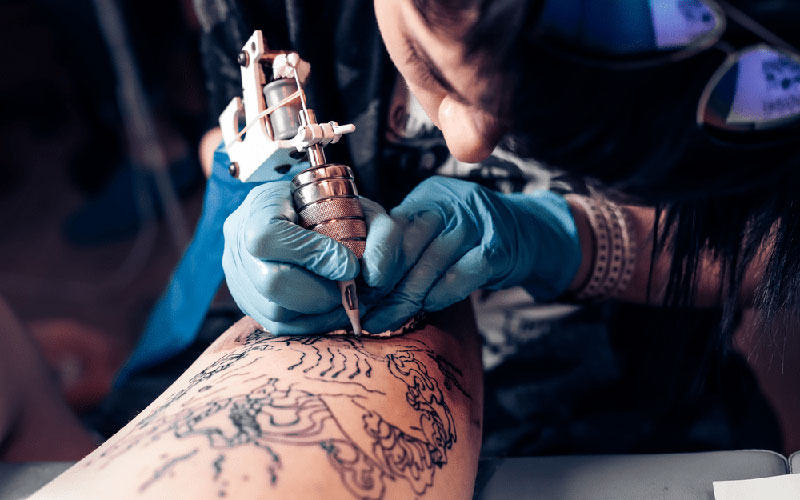
Drought
During the tattooing process, you’ll experience a sensation of burning pain. The needle’s repetitive stabbing motions can induce a burning feeling on your skin, particularly in areas with loose or fatty tissues, and this discomfort may persist throughout the tattoo session. While the pain isn’t intense, it can be unsettling and contribute to fatigue.
Dull Pain
It’s often the most challenging aspect to manage and tends to be underestimated. Typically, it emerges after the initial needle pricks. As adrenaline and other hormones kick in, it gradually transforms into a lingering background ache.
While some discomfort persists, it might intensify into sharper pain as the session progresses. Engaging in conversation with a friend or watching television can help distract from the pain. It’s important to anticipate that the pain-relieving effects of significant interventions may begin to diminish, and sensations may become more intense towards the end.
Crying Pain
Upon getting a tattoo, it’s typical to experience a scratching sensation. This kind of discomfort is generally bearable for most individuals and is not considered unpleasant. The scratching sensation tends to arise when the tattoo artist has been working in a specific area for an extended period, whether they’re shading or adding intricacy to the design. While this sensation may be felt with a single needle, its intensity tends to increase when multiple needles are used to enhance the ink.
Sharp Stinging Pain
At times, it may seem uncontrollable, akin to a bee sting beneath your skin. The intensity of the pain can be quite pronounced, particularly experienced by tattoo artists engaged in intricate work using a single needle or outlining a design. This sensation tends to be more noticeable when tattoos are applied to delicate areas like the wrists, ankles, and inner biceps.
Vibrating Pain
When you opt for a tattoo in regions abundant with bones, like the wrist, ankle, or shin, vibrations may induce discomfort. The needle’s vibrations make nerves resonate against the adjacent area, resulting in a sensation that, while not overly intense, can feel unfamiliar and somewhat uneasy, especially for those getting tattooed for the first time.
Conclusion
In conclusion, navigating the realm of tattoo pain is a subjective journey, influenced by individual thresholds and preferences. Whether you’re eyeing a spot on the high end or low end of the perceived pain spectrum, remember that the ultimate choice rests on personal considerations. The so-called “tattoo pain chart” can serve as a general guide, but it’s essential to prioritize your own comfort and the significance of the chosen body canvas. So, as you embark on your inked adventure, use the tattoo pain chart as a compass, but allow your unique experience to shape the narrative of your body art journey.
Frequently asked questions
What is the most painful place to get a tattoo?
The ribs are often considered the most painful place to get a tattoo due to their proximity to bones and nerves.
What is tattoo pain equivalent to?
Tattoo pain varies but is often likened to a continuous, sharp scratch or a constant, intense sunburn.
What does tattoo pain feel?
Tattoo pain feels like a combination of sharp, stinging sensations and a prolonged burning discomfort.
What type of tattoo hurts the most?
Generally, areas with less padding, like ribs and ankles, tend to hurt more, making detailed and intricate tattoos in these regions more painful.
To get more tattoo ideas or to learn more about tattoos you can visit these blogs 150 The Best Shoulder Tattoos for Women ,101 Best Back Tattoos For Women,
Daniel Stewart is a renowned tattoo design expert With years of experience in the industry, Daniel is known for his creativity and attention to detail. Through this platform, he shares valuable insights, tips, and inspiration for both aspiring tattoo artists and enthusiasts. Daniel's expertise spans various styles, from intricate geometric patterns to vibrant watercolor designs. His dedication to personalized and meaningful tattoos sets him apart in the industry.
